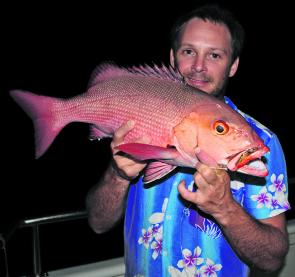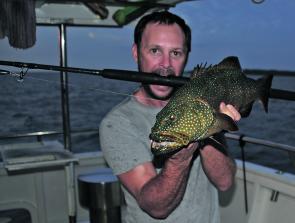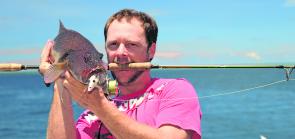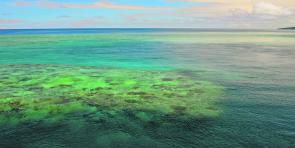Transitioning from April to May we hope the all the pain and hardship endured by those around Cooktown, Hopevale and other areas affected by Cylone Ita will be compensated with great fishing in the months to come. The rains following this cyclone will inject life into the rivers and estuaries of the southern Cape, making everything from the mud crabbing to prawn cast-netting to barra fishing just that much more productive.
Last year in much of the Gulf Country there was very little wet season and the resulting lack of mud crabs just about put the pros out of business in some places. Barely a crab could be caught. So there needs to be a big turn around and a massive recruitment of juveniles to get things back on track. We are heading back into an El Ninio cycle, which is typified by lower and less predictable rain cycles. But with warming seas, experts are predicting fewer but potentially more intense cyclones over coming years.
There are victims out of the huge cyclones that periodically drift into Cape York's east coast. A Category 5 storm can do enormous damage to the delicate ecosystems on the Great Barrier Reef. It is clear to anyone diving or snorkelling in reef areas damaged by these big super storms. Absolute carnage of the huge coral bommies, plate corals tipped over, stag-horn corals snapped like the twigs of trees damaged from the same storm. I have seen boulder corals which have rolled like a bowling ball down a reef slope, crushing everything in it's path.
Fish such as coral trout, which usually remain close to the reefs they were spawned on, are particularly susceptible to this type of habitat loss. Professional fisherman working the east coast the year after a cyclone usually see drastically fewer fish than before. The stretch of outer reef east of Princess Charlotte Bay extending south to Mackay has received quite a few batterings in the last 10 years. Even though this is part of a natural cycle of reef damage and recovery, it can have an immediate impact on the affected areas. The reef will regenerate, but it takes time.
Conditions should by now have settled and May will be a the month enjoyed by boating enthusiasts and fisherman alike. Up in the tropical far north, the sting of summer heat will be a distant memory and cool weather patters will begin to emerge. The next 6 months will become quite predictable on Cape York Peninsula with rainfall all but disappearing and the fishing generally beginning to fire up.
I love fishing this month for the variety of species on offer and the clarity of both estuary and offshore conditions. Rivers are often at their cleanest this time of year, with freshwater beginning to subside and saltwater intruding further into the upstream reaches of the larger Western Cape rivers. Fishing some of the large snag piles and junctions will be a feature of barramundi fishing in May. Fishing the upstream junction between fresh and salt is another sure bet this time of year.
At times there will be a colour change where two major systems come together on an outgoing tide. Try anchoring wide of this junction and working firstly shallow diving lures and if unsuccessful , deeper divers and soft plastics. At times it will take numerous casts to slightly different spots before a strike is registered. Concentrate your efforts in proven spots and try and remember individual snags, junctions and rock bars where you have had success previously.
Take note of productive times and tidal influences in your success as these patterns will now begin to take shape right up until Christmas time or the next wet season rears its head.
Reads: 1088
These hard pulling red bass will bite solidly through the night.

A nice passionfruit trout trolled up in 8m on dusk.

Trout will swim away from their reef edge or rise from a bommie to smash soft plastics.

Look for fusilier schools huddling on a good looking reef edge.




